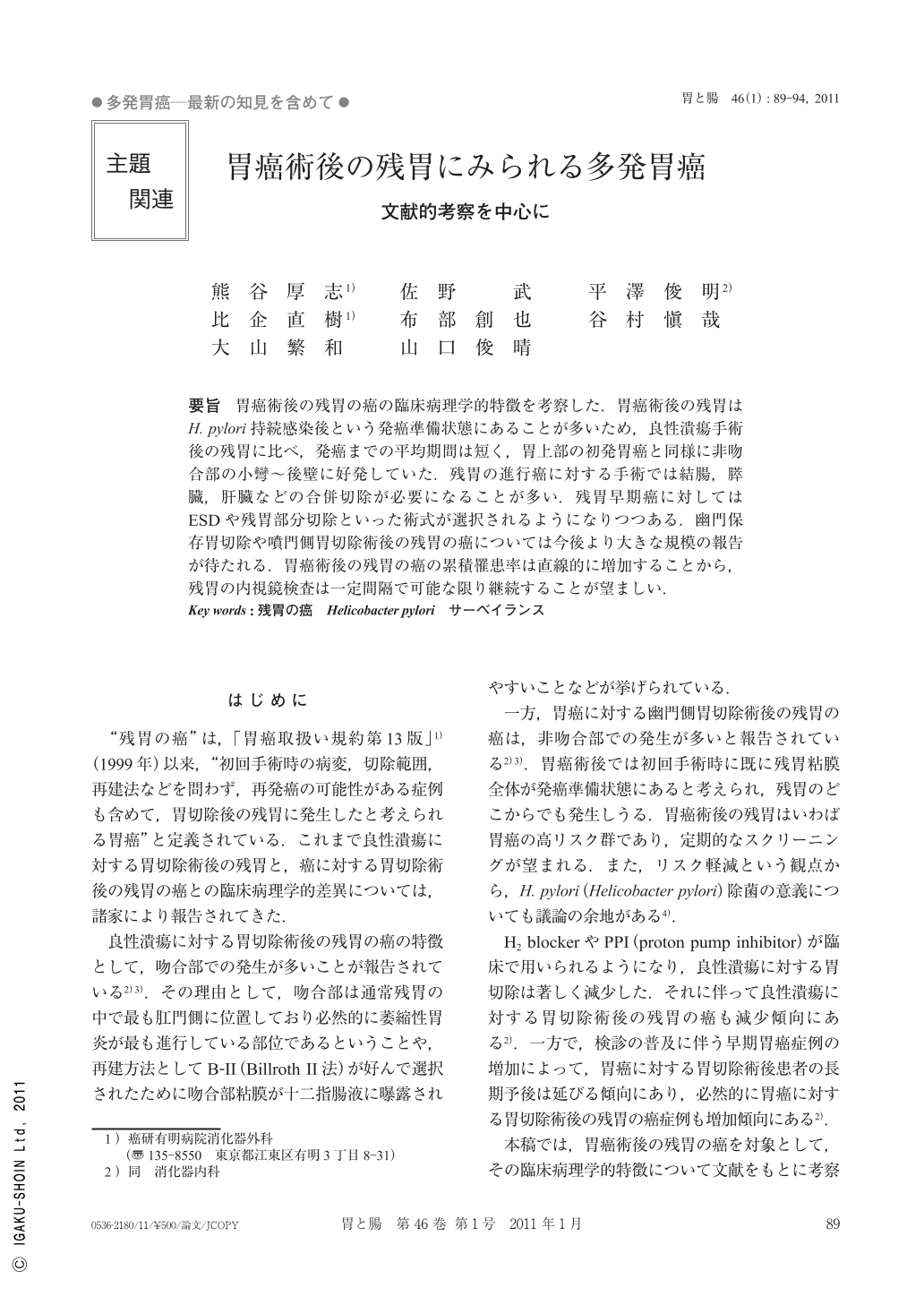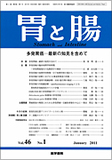Japanese
English
- 有料閲覧
- Abstract 文献概要
- 1ページ目 Look Inside
- 参考文献 Reference
要旨 胃癌術後の残胃の癌の臨床病理学的特徴を考察した.胃癌術後の残胃はH. pylori持続感染後という発癌準備状態にあることが多いため,良性潰瘍手術後の残胃に比べ,発癌までの平均期間は短く,胃上部の初発胃癌と同様に非吻合部の小彎~後壁に好発していた.残胃の進行癌に対する手術では結腸,膵臓,肝臓などの合併切除が必要になることが多い.残胃早期癌に対してはESDや残胃部分切除といった術式が選択されるようになりつつある.幽門保存胃切除や噴門側胃切除術後の残胃の癌については今後より大きな規模の報告が待たれる.胃癌術後の残胃の癌の累積罹患率は直線的に増加することから,残胃の内視鏡検査は一定間隔で可能な限り継続することが望ましい.
We investigated clinicopathological features of stump carcinoma after gastrectomy for cancer. As compared to stump carcinoma after ulcer surgery, the mean interval between initial surgery and second primary cancer was short. This is probably because the remnant gastric mucosa has high potential of carcinogenesis brought on by persistent infection of H. pylori. Second primary cancer in the remnant stomach arose at non-anastomotic sites, and similarly to primary cancer in the proximal stomach, on the lesser curve and the posterior wall. Resection of the colon, pancreas or liver is often necessary in completion gastrectomy for advanced stump cancer. On the other hand, early stump cancers are increasingly treated by less invasive treatment such as ESD or partial resection. Stump carcinoma after pylorus-preserving gastrectomy or proximal gastrectomy is a new issue and should be further studied. Since the cumulative incidence of stump cancer after gastrectomy for cancer increases steadily, periodical endoscopic follow-up of the gastric stump should be continued for as long as possible.

Copyright © 2011, Igaku-Shoin Ltd. All rights reserved.


